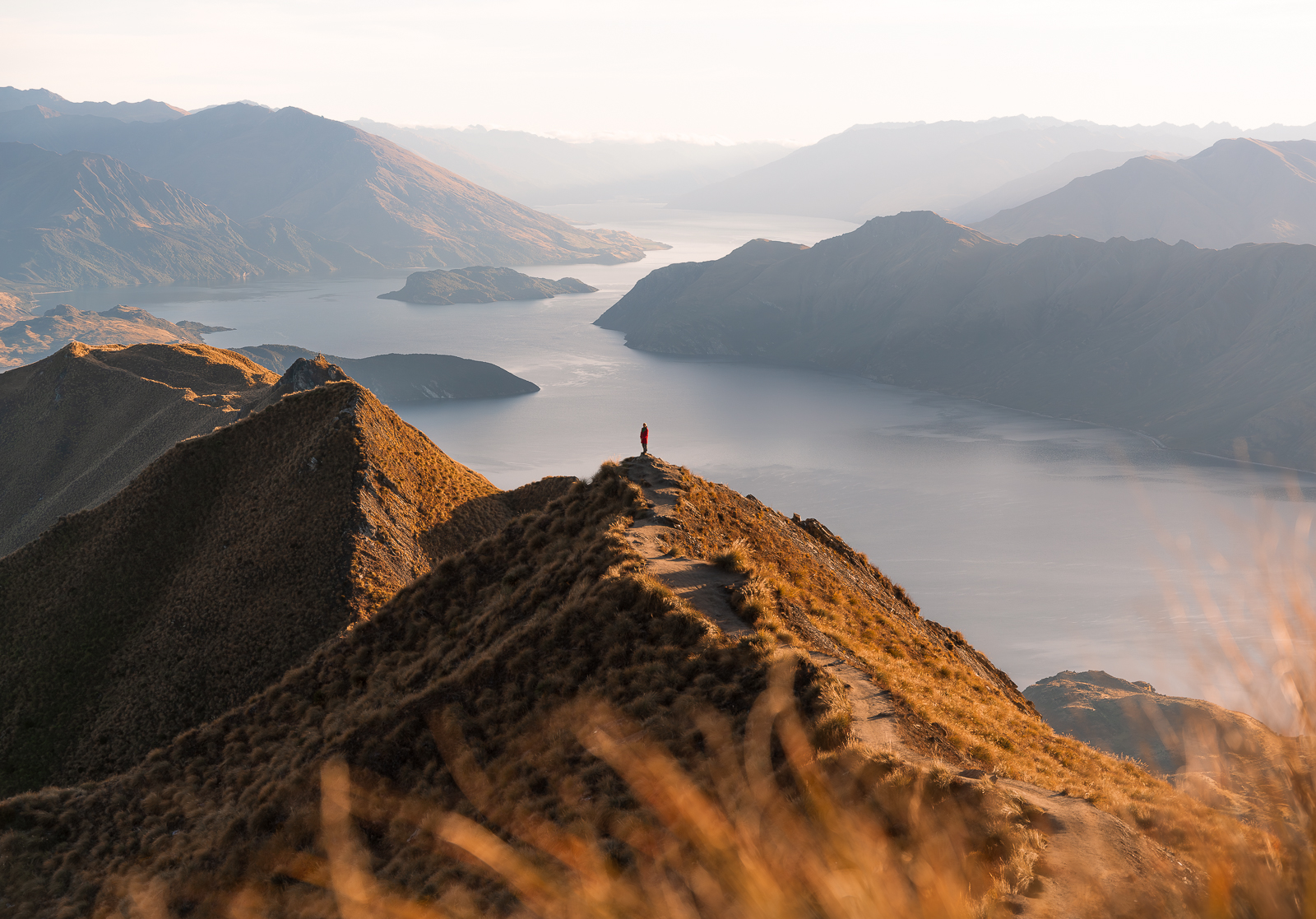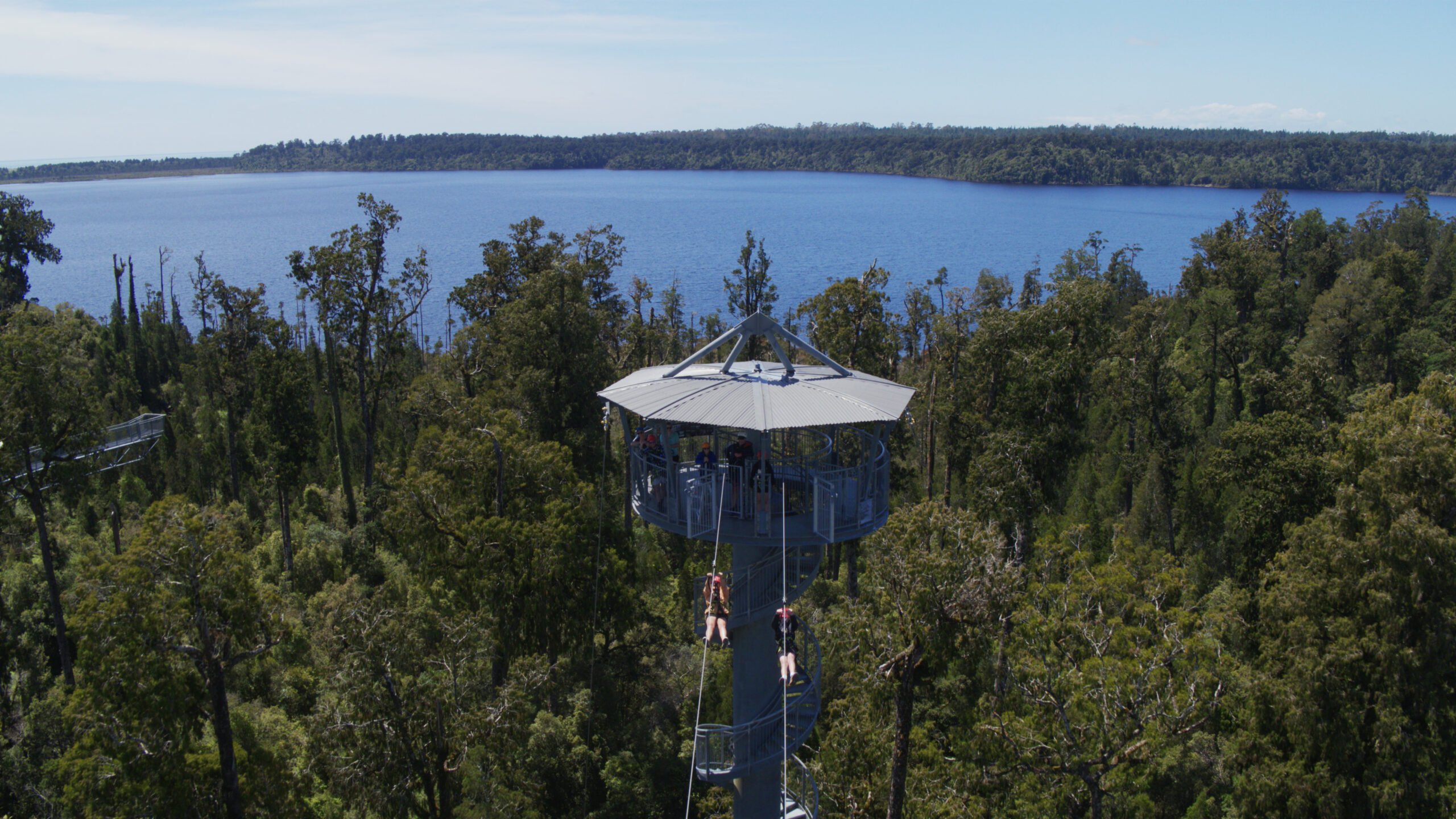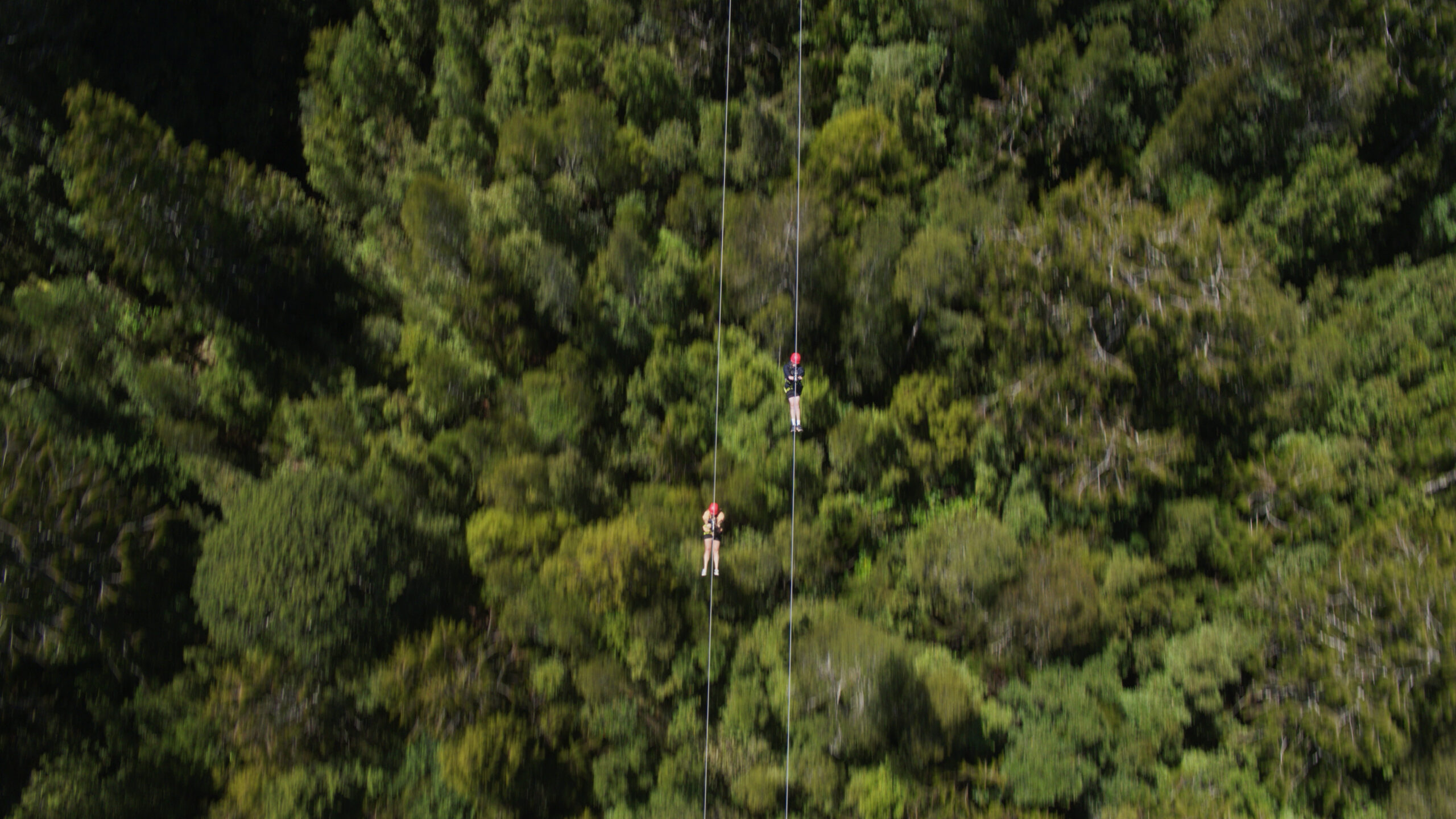Deciding when to explore New Zealand’s picturesque South Island can be a dilemma. Known for its captivating landscapes and adventurous activities, the experience massively depends on the season.
This article offers detailed insights into each season – the climate, sights, costs and more- making your decision-making simple and exciting. Let’s embark on this journey of uncovering the best time for your South Island adventure!
Key Takeaways
- Summer is the perfect time to go to the South Island. It’s warm and great for outdoor activities like hiking and water sports.
- Autumn offers stunning fall foliage and lower crowds, making it a great time to explore places like Arrowtown and Wanaka.
- Winter provides a magical winter wonderland experience with snow-capped peaks and opportunities for skiing in popular areas like Queenstown.
Overview of the South Island
The South Island of New Zealand, known as Aotearoa in Maori, is a paradise waiting to be explored. This island boasts an array of breathtaking landscapes from snow-capped peaks and golden beaches to braided rivers and expansive lakes.
A variety of towns on the South Island offer hubs for adrenaline-fuelled adventures including bungy jumping, skydiving, and ziplining. There is also an abundance of locations providing serene natural beauty perfect for slow exploration.
Here on the South Island, you’ll find some of New Zealand’s most iconic sights. Aoraki Mount Cook is the highest peak in the country. Lake Tekapo has beautiful turquoise waters. The West Coast has impressive rainforests and a wild coastline.
There are many amazing things to tick off the bucket list here. You can hike on beautiful trails like Roys Peak or the Routeburn Track during the day. At night, you can look at the stars in places called International Dark Sky Reserves.
You can also take a helicopter ride to see breathtaking views below you. There is always something special happening here.

Factors to Consider When Planning a Visit
When planning a visit to the South Island, it is important to consider factors such as the weather and season, crowds, and cost.
The Weather & Season
Sunny and clear weather in the South Island during December to February attracts many visitors. You can expect temperatures ranging between 19-23ºC (66-73ºF). This ideal weather supports thrilling outdoor activities like hiking on Roys Peak or ziplining in Hokitika.
In autumn, the weather changes and becomes mild with fewer tourists from March to May. Winter arrives quickly in June and remains until August. During this time, the landscapes transform into snowy winter wonderlands. During this time the mountains are perfect for skiing on Mt Hutt or Coronet Peak.
Finally, spring arrives in September bringing longer daylight hours perfect for exploring places such as Lake Tekapo and the Wanaka Lavender Farm.
The Crowds
Tourist numbers fluctuate greatly throughout the year in New Zealand’s South Island. During the summer, Queenstown and Mt Cook National Park attract many tourists. They come to enjoy the warm weather and engage in outdoor activities such as hiking, skydiving, and bungy jumping.
On the other hand, autumn offers a break from high crowd levels allowing for quiet exploration of golden vineyards in Arrowtown and Marlborough Sounds.
During winter, skiers flock to ski fields such as Coronet Peak and Mt Hutt. However, the overall number of tourists significantly decreases compared to other seasons. The arrival of spring brings moderate crowds back as people flock for wildlife spotting tours especially around Dunedin.
The Cost
Planning a trip to New Zealand’s South Island involves various costs. Prices can change based on the season, where you stay, what you want to do, and how you get around.
Usually, midsummer sees a spike in prices due to it being the peak season for tourism. Prices can go up during holidays such as Christmas, New Year, Easter, or Waitangi Day. This is because there is a high demand from tourists, which can lead to crowded attractions and higher costs.
School holidays can influence both availability and cost of accommodation and activities too. On occasion, major sporting events like an All Blacks rugby match might drive up accommodation prices particularly in the major cities.

Summer on the South Island
Experience warm and sunny weather, perfect for outdoor activities like hiking, biking, and watersports. Don’t miss out on the top places to visit during this season! Read on to find out more.
Weather in Summer
Summer in the South Island offers warm, sunny weather perfect for outdoor adventures. The average temperature typically ranges from 19-23ºC (66-73ºF), providing ideal conditions for activities such as hiking, road trips, and water sports.
However, occasional moderate rainfall can grace the island adding an extra beauty to its landscapes. The rainforests of the West Coast and Fiordland come to life with the perfect combination of summer sun and rainfall.
Daylight Savings also means longer daylight hours, which attracts many people to visit New Zealand during this time of year.
Summer is a good time to visit the South Island. However, there are many tourists during this time and prices tend to be higher.
It’s important though to plan accordingly by pre-booking your activities and accommodation well in advance. This way you’re bound to have a smoother travel experience while making the most of everything that summer on the South Island has to offer.
Top Places to Visit in Summer
Adventure awaits in the South Island of New Zealand during the summer. This season, with its warm and sunny weather, makes it an ideal time for outdoor activities and exploration. Here are some of the top places to visit:
- Abel Tasman National Park: Explore the park’s iconic golden sand beaches and swim in the crystal clear waters. Hike the Abel Tasman Coast Track or take a scenic boat ride.
- Hokitika: A gem of a town on the West Coast. Explore the beautiful West Coast beaches and ancient forests surrounding this town. Hike to Mt Brown Hut for stunning views of the Southern Alps and Lake Kaniere.
- Queenstown: The adventure capital of New Zealand. In summer, you can try bungy jumping, skydiving, or take a scenic helicopter ride.
- Mt Cook National Park: Try hiking on one of its many trails or enjoy stargazing at night with clear summer skies.
- Arrowtown: Enjoy a leisurely stroll through this historic gold mining town or take part in a wine tour under brilliant sunshine.
- Marlborough Sounds: Take advantage of extended daylight hours by exploring this area’s stunning scenery through kayaking or hiking trips.
- Golden Bay: Renowned for golden beaches that look breathtaking under the summer sun – perfect for picnics and dips into turquoise waters!

Autumn on the South Island
Autumn on the South Island brings cooler temperatures and stunning fall foliage. Don’t miss out on visiting Arrowtown and experiencing the vibrant reds and golds of the season. Read more to discover other top places to visit during this picturesque season.
Weather in Autumn
Autumn in New Zealand, particularly on the South Island, brings a dramatic change in scenery. Foliage erupts into hues of red, yellow, and orange, displaying stunning colours.
Temperatures during this season typically range from 13-19ºC (55-66ºF). It’s worth noting that autumn sees slightly higher rainfall compared to other seasons. However, late fall provides an excellent opportunity for a relaxing holiday.
Visitors can indulge in the picturesque landscape and enjoy shorter hikes without struggling against harsh weather conditions. Despite occasional rain showers typical of central Otago in March, variable weather patterns also lend days of glorious sunshine. This makes autumn an appealing time to visit New Zealand’s south island.
Top Places to Visit in Autumn
Autumn transforms the South Island of New Zealand into a colourful paradise. Visitors can savour the iconic landscapes blanketed in vibrant fall colours. Here are top places you should add to your itinerary:
- The West Coast: Drive the Great Coast Road during the quieter months of autumn. Experience stunning ocean and mountain views on one of the top ten coastal drives in the world. Discover charming seaside towns as you go.
- Arrowtown: Known for its spectacular display of fall foliage, this quaint mining town offers scenic walks perfect for autumn views.
- Wanaka: Hiking Roys Peak in autumn becomes an unforgettable adventure with panoramic views of snow-capped mountains against a backdrop of fiery reds and oranges.
- Queenstown: This adventure destination is also a haven for photographers during autumn, offering picture-perfect scenes at every corner.
- Marlborough Sounds: Autumn is an ideal time to enjoy a tranquil kayaking trip or wine tour in this region renowned for its vineyards.
- Dunedin: Visit the city’s beautiful gardens that burst into colour in this season or explore the Otago Peninsula for wildlife adventures.
- Mount Cook National Park: Witness the contrast between majestic snow-covered peaks and valleys filled with golden-hued trees.

Winter on the South Island
Experience the magical winter wonderland of the South Island with snow-capped peaks and thrilling skiing opportunities.
Weather in Winter
Winter in the South Island brings colder temperatures ranging from 7-12ºC (44-53ºF), making it ideal for snow sports. The mountains become a beautiful snowy playground, attracting winter sports enthusiasts to popular ski areas like Wanaka, Otago, and Canterbury.
Despite moderate rainfall, this season remains popular for travellers looking for a peaceful and affordable trip. Prices for flights, hotels, and car rentals are generally lower.
Winter thus becomes an inviting season for those seeking solitude amid mesmerising snow-capped landscapes.
Top Places to Visit in Winter
Exploring the South Island in winter offers unmatchable scenic beauty and a quiet retreat away from bustling tourist crowds. Here are some must-visit places:
- Queenstown, New Zealand’s winter sports hub, has skiing, snowboarding, and helicopter rides for snow enthusiasts.
- Visit ski resorts on Coronet Peak and Mt Hutt to get the best of South Island’s winter sports scene.
- Enjoy a peaceful drive across the Canterbury Plains to Lake Tekapo for beautiful views of the Southern Alps against a clear blue sky.
- Experience the crisp winter days of sunny Nelson. Cycle the Great Taste Trail, sampling local food and drinks with stunning coastal and mountain backdrops.
- Spend an exciting day at Wanaka’s ski areas. Afterward, relax by the lake at night. Enjoy the peacefulness of winter.
- Explore Dunedin’s unique mix of cultural attractions, historic buildings, great shopping and dining scenes amidst cooler temperatures.
- Do not forget to visit Hokitika to walk the magnificent Treetop Walkway. Enjoy views of the spectacular Southern Alps and West Coast rainforest on a clear winter day. Discover the best things to do in Hokitika in Winter in our blog post.

Spring on the South Island
Spring on the South Island has mild temperatures and beautiful scenery, perfect for exploring the region’s natural beauty. From vibrant flowers to newborn wildlife, there is something enchanting about spring on the South Island that will make your visit truly unforgettable.
Read on to discover the top places to visit and activities to enjoy during this beautiful season.
Weather in Spring
Spring ushers in warmer temperatures on the South Island, typically ranging from 13-19ºC (55-66ºF). This season’s rainfall parallels those of autumn, creating a balance that allows wildflowers like Lupins to bloom magnificently.
As daylight hours extend into the evening, visitors get to enjoy more daytime activities amidst spring’s mild weather conditions. These elements combined make for an inviting exploration experience across New Zealand’s diverse landscapes during this time of rejuvenation and awakening.
Top Places to Visit in Spring
- Explore the vibrant city of Christchurch and take a stroll through the beautiful Botanic Gardens.
- Discover the impressive landscapes of Fox and Franz Glaciers. Walk amongst towering ancient trees and enjoy the birdsong of early spring.
- Immerse yourself in the natural beauty of the Hokitika Gorge Track or zipline through the forest canopy at West Coast Treetops.
- Take a scenic drive to Lake Tekapo and witness the stunning turquoise waters surrounded by snow-capped mountains. Frolic amongst the colourful lupin flowers around the historic Church of the Good Shepherd.
- Discover the natural wonders of Fiordland National Park and experience the breathtaking Milford Sound. Marvel at the beauty of tumbling waterfalls and sky-scraping peaks.
- Visit the charming town of Arrowtown and immerse yourself in its rich gold mining history.
- Go on a hike on the Routeburn Track and see amazing views of Fiordland and Mt Aspiring National Parks.
Spring in New Zealand’s South Island is a wonderful time to visit. The scenery is beautiful, the prices are cheaper, and there are plenty of outdoor activities to enjoy. So pack your bags and start planning your trip to these amazing destinations!
Learn the pros and cons of visiting the South Island in different seasons to maximise your trip experience.

Summer
Summer is the most popular time to visit the South Island of New Zealand. The weather during summer is perfect for outdoor activities. It is an ideal time to explore and enjoy all that the South Island has to offer.
In summer, the weather is good for outdoor activities like hiking, biking, swimming, and scenic road trips. The temperatures range between 19-23ºC (66-73ºF) with some rain.
But, places like Queenstown and Lake Tekapo can be busy and costly in summer because many tourists want to visit during the warmer months. So be sure to plan ahead and book accommodation early if you’re planning a trip during this time.
Autumn
Autumn in the South Island of New Zealand is a quieter and more peaceful time to explore, with fewer crowds and lower prices. During this season, temperatures range from 13-19ºC (55-66ºF), making it comfortable for outdoor activities.
While there is slightly higher rainfall compared to summer, the chance to see vibrant autumn colours and enjoy longer daylight hours makes it worth a visit.
Whether you’re hiking through stunning trails or indulging in wine tasting tours, autumn offers a refreshing experience in the South Island.
Winter
Winter in the South Island brings cooler temperatures and the opportunity for snow sports. During this season, people enjoy popular activities such as skiing and snowboarding, as the mountains cover themselves in a beautiful white blanket of snow.
Additionally, prices for accommodations, car rentals, and flights are generally lower compared to the summer season. Winter attracts more visitors to ski fields. However, other attractions in the South Island are less crowded. This makes it an ideal time to explore.
The average temperatures range from 7-12°C (44-53°F) with moderate rainfall. So if you’re looking for an adventurous winter getaway, consider visiting the South Island of New Zealand!
Spring
Spring in New Zealand lasts from September to November and offers longer daylight hours, making it an ideal time to visit. During this season, you can witness the beauty of blooming flowers, including lupins.
The temperature ranges from 13-19ºC (55-66ºF), providing pleasant weather for outdoor activities like bungy jumping, zip-lining, jet boating, and whitewater rafting. Soak up the stunning landscapes as nature comes alive during spring in New Zealand.

The Impact of Public Holidays and School Holidays on Your Visit
Public holidays and school holidays can have a significant impact on your visit to the South Island of New Zealand. Major tourist attractions tend to be crowded during national holidays such as Christmas, New Year, Easter, and Waitangi Day.
This means longer queues, limited availability for tours or activities, and higher prices for accommodation. It’s also important to note that during major sporting events like the All Blacks rugby matches in the cities, there may be shortages of accommodations due to increased demand.
Booking early is important if you want to visit popular snow destinations like Queenstown and Wanaka in late June and July. Finding accommodation can be difficult in these areas.
Remember, travelling to the South Island during midsummer, school holidays, and national holidays can be costly because of high demand. Therefore, planning your trip accordingly will help you navigate these potential challenges and ensure a smoother experience overall.
The Best Season to Visit Depending on Your Interests
Discover the best season to visit the South Island based on your interests, whether it’s outdoor activities, cultural events, wildlife spotting or quiet exploration.
Outdoor Activities
Summer (December, January, and February) is the perfect time to indulge in outdoor activities on the South Island of New Zealand. Many people visit during this season to enjoy various activities due to the pleasant and sunny weather.
From hiking in majestic national parks to bungy jumping off scenic cliffs, there are endless opportunities for thrill-seekers. The South Island also offers breathtaking beaches where you can try water sports like surfing or kayaking.
And let’s not forget about the stunning landscapes that make it an ideal destination for road trips and camping experiences. So grab your sunscreen and get ready for an unforgettable summer adventure on the South Island!
Cultural Events
The South Island of New Zealand is not only a haven for outdoor adventures, but it also offers a vibrant cultural scene with many events throughout the year. From music festivals to art exhibitions and traditional celebrations, there’s something for everyone to enjoy.
One of the most famous cultural events takes place in Queenstown, known as the adventure capital of New Zealand. Here, you can immerse yourself in Maori culture through performances, storytelling, and delicious feasts.
In spring, Dunedin’s gardens bloom and the Rhododendron and Garden Festival displays beautiful flowers for visitors to enjoy.
Wildlife Spotting
Whale watching in the South Island is a thrilling experience that shouldn’t be missed. The best time for this activity is from June to December, with Kaikoura being a popular spot.
During these months, you have a great chance of seeing majestic whales up close as they migrate along the coast. Another fascinating wildlife spotting opportunity on the South Island is seal and sea lion spotting.
Do this in summer from January to March when these playful creatures are active near the coast. September to November is the best time for birdwatching in the South Island, as many migratory birds come during this period.
Quiet Exploration
Autumn and winter are the perfect seasons for quiet exploration on the South Island. With fewer tourist crowds and lower prices, you can truly immerse yourself in the stunning landscapes without feeling overwhelmed.
Autumn offers a chance to see vibrant reds and oranges as the leaves change, while winter provides a peaceful setting with snow-capped peaks. Take advantage of these quieter times to enjoy nature at its best and discover hidden gems away from the hustle and bustle of peak tourism periods.

Conclusion
Choosing the best time to visit the South Island of New Zealand depends on your preferences and priorities. If you enjoy warm weather and outdoor activities, summer is ideal with its longer daylight hours.
For a quieter experience with stunning autumn colours, lower crowds, and more affordable prices, consider visiting in autumn. Winter offers snow sports and lower rates for accommodation and flights.
Spring brings refreshing temperatures and the chance to see lambs and blossoming flowers. Choose the season that aligns with your interests for an unforgettable trip to the beautiful South Island.
FAQs
1. When is the best time to visit the South Island?
The best time to visit the South Island of New Zealand is during the summer months, from December to February. The weather during this time is warm and dry.
2. What is the weather like in the South Island during winter?
During winter in the South Island, temperatures can drop below freezing and there may be snowfall in higher altitude areas. It’s a great time for winter sports enthusiasts.
3. Is it crowded during peak tourist season in the South Island?
Yes, peak tourist season in the South Island can be quite busy with large numbers of visitors. It’s advisable to book accommodation and attractions well in advance.
4. Are there any specific events or festivals happening on the South Island throughout the year?
Throughout the year, the South Island hosts numerous events and festivals. These include music festivals, art exhibitions, and outdoor competitions.









